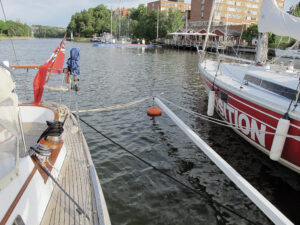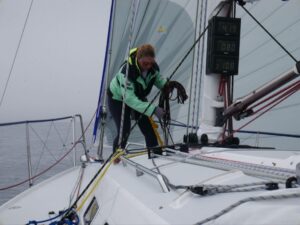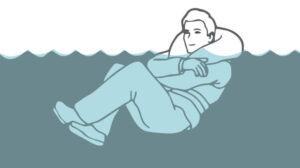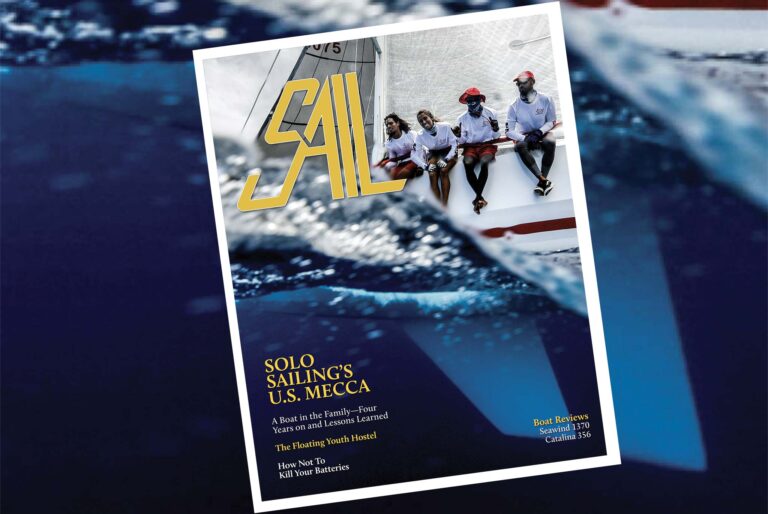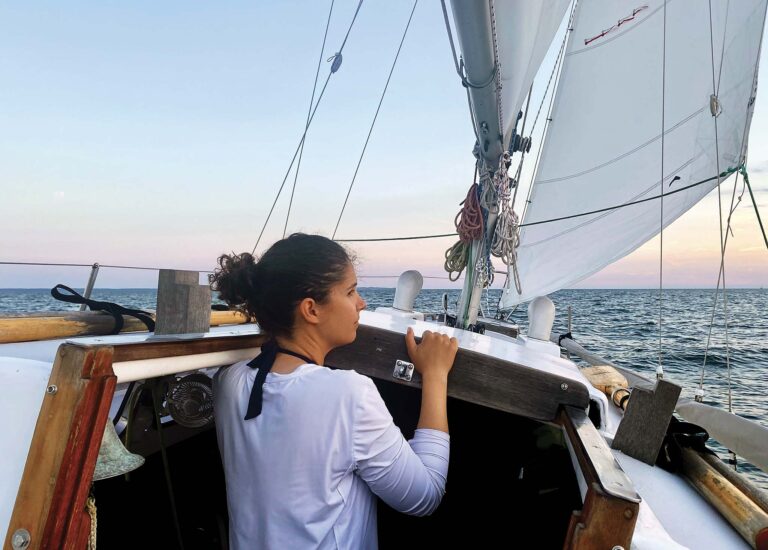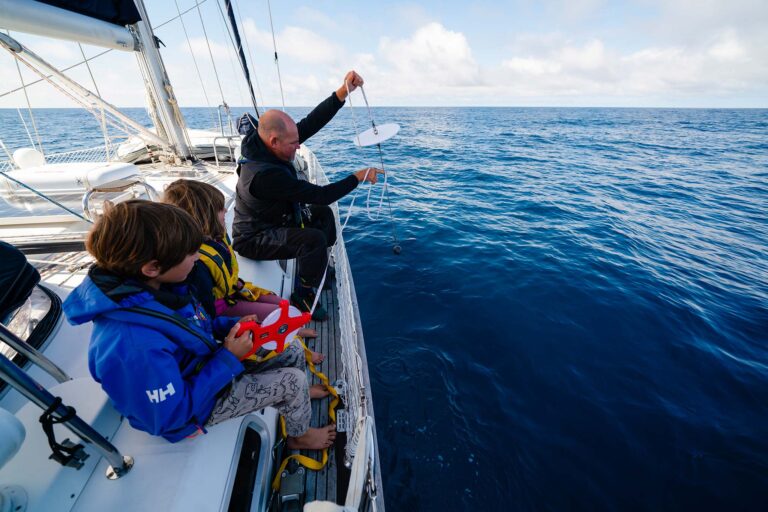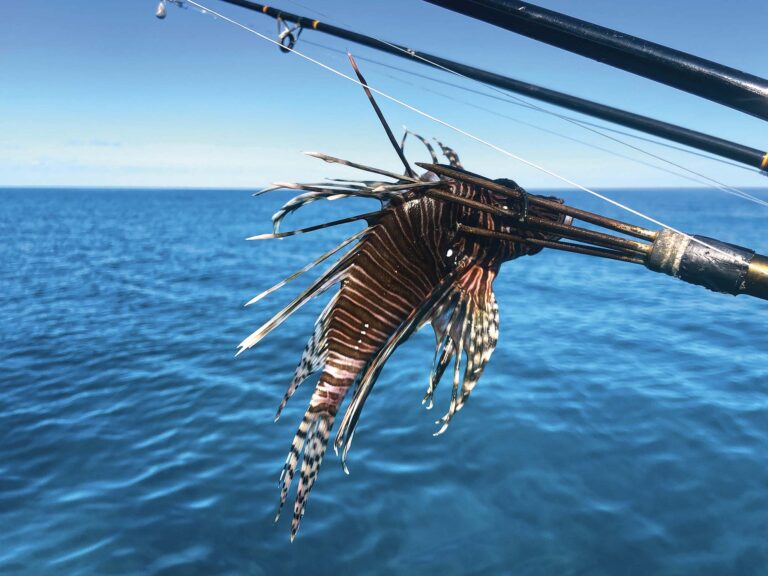Seventy years ago last June, 156,115 Allied troops under General Eisenhower, including 73,000 from the United States, stormed the beaches of Normandy to breach Hitler’s “Atlantic Wall.” Their success in the face of organized and motivated opposition is a keystone for bravery rewarded.
Eleven months later, the Nazi regime was crushed and hostilities in Europe ceased. In the German Baltic, the famous yachting center of Kiel, the Newport of the Fatherland, lay in ruins. Lawlessness was rife, and as some degree of structure slowly returned British authorities realized that the port harbored a significant number of valuable yachts. Private craft were returned to their owners where appropriate, but many turned out to be the property of the German state. As such, they were subject to forfeiture. One of these was Overlord.
Overlord is a 58-foot sloop built as Pelikan for the Luftwaffe in 1935 by the famous yard of Abeking and Rasmussen. She was one of 10 such yachts built to the German 100-square-meter rule that ended up in Britain as “prizes of war.” In 1945, they were known as “windfall yachts” and were renowned for their good looks and sweet lines as inspired by the German decision that the essentially Swedish “square meter” race-boat rule had lost the plot.
They were right. The Swedish rule, to be blunt, had reached a point where it was producing boats that were only good for a sprint around the cans in fair weather. Like the Universal Rule of the early 20th century, which gave the world the noble J-class America’s Cup racers, the square-meter rule’s original remit was to generate wholesome yachts that were exciting to race but could cruise comfortably too. And while the Swedes eventually came up short in terms of this dual-use mandate, the Germans succeeded.
None of the windfall yachts had engines, and after some highly colorful passages back to England, they were adopted by the various armed services for careers in training and racing. As they aged, most of them were sold off and faded away, until only a few remained. Among them are Sea Scamp, a fine 50-square-meter boat based on the Solent, and Overlord, the last 100-square boat in the UK, sailing under the burgee of the Offshore Cruising Club.
I was invited to sail along the D-Day beaches aboard Overlord while the 70th anniversary celebrations were in full swing. We weren’t involved with the main event, because the boat wasn’t part of the invasion fleet. Even so, who would turn down such an opportunity?
The afternoon before the anniversary, I hopped off the ferry from Portsmouth to Caen and trudged in surprising heat along to the marina. Every boat except one American seemed to be flying some form of British ensign, and they were crammed in four deep. Most of the people were away at a memorial service, but finding Overlord wasn’t difficult. As a life-long owner of non-standard craft, I can spot an unusual mast at a glance. Among the ranks of roller-furlers, swept-back spreaders and in-mast mainsails was one—and only one—that could be Overlord, an aluminum spar that was tall, raked, fractionally rigged and equipped with a proper set of jumpers at the upper root of the forestay.
Downright elegant, I thought, as I made my way around to her. Why don’t modern fractional rigs have that sort of arrangement? The backward thrust of the jumpers supports the forestay so that the runners only need be set up for maximum performance or if the sea is shaking the boat like a terrier. Another similar rig stood out on the next dock. It was Sea Scamp, dressed in her best for the occasion.
Examining Overlord in a marina crammed with modern race boats I was struck by how yacht design has evolved in 80 years. Immediately alongside her was a Royal Air Force boat a little over half her length. To climb aboard her from Overlord you would have had to step up a long way, and as you did, the entire yacht would tip over to meet you.
Boarding the 100 square, I might as well have been walking into the office, so little effect did my weight have. With a beam of a mere 11ft 6in, Overlord’s waterline length is only 38 feet, giving her 10 feet of overhang at either end. When she heels, some of this is immersed, lengthening her waterline in an unmeasured way for racing while creating reserve buoyancy to prevent pitching. The long ends also allow her buttock lines to run out to a natural conclusion instead of being cut off short, creating a lovely hull to look at. All in all, Abeking and Rasmussen’s in-house designer did a pretty good job. How his creation would sail was still to be discovered.
Taking the boat out for the actual anniversary was a non-starter. All the beaches and any adjacent land and sea were closed up by security. With most of the western world’s leaders present, including President Obama and Queen Elizabeth, we didn’t feel too bad about this, but it was tough to learn that my press pass had somehow fallen down a crack. My options were therefore either to trudge the hot streets looking for a gap in the security cordon, try a flanking march to find the end of the blockade, or watch the whole event on a gigantic screen in the town square.
The first option seemed doomed to failure, and the third, while attractive, was something I could have managed in comfort at home in front of the TV, so a shipmate and I tried the military option and the long hike. That failed too, and we arrived back at the ship just in time to don fancy dress uniforms for a WWII party miles away behind the once strategically vital Pegasus Bridge. The evening started disastrously when our cab driver, a man clearly in league with whoever dished out the press passes, failed to show up until 2215. Fortunately, the whole binge was running late. By the time we’d eaten our fill and were bopping to the Memphis Belles who, decorative and delightful, turned out a classy revival of Andrews Sisters swing, our interest in life was revitalized.
Indeed, our night was made by two veterans who had to be the far side of 90 years old. One, clad in blazer, tie and medals, grabbed the prettiest girl in the place and whirled her around in a full-on 1940s jitterbug. His mate bided his time until the trio took a break. Then he stood quietly by the mike and delivered well-rounded nostalgic songs of “the day” that brought a tear to many a younger eye.
By 0200 my shipmates and I were ready to toss in the towel—although the old boys were still going for broke—and we called our cabbie only to find that once again, the wretch had defected. I slept like a brick after a 3-mile walk home and a dram of the right stuff that would have stunned a buffalo.
All very well, you’re undoubtedly thinking, but what about the yachting? That happened the next day and was worth the grief with the authorities, the ferry ride and the blisters. We decided to sail Overlord westward along Sword, Juno and Gold Beaches to Arromanches, the so-called Mulberry Harbor that encloses Port Winston. This is an entirely man-made structure. It consists of numerous heavy concrete barges that were constructed in southern England, towed 100 miles across to France, and sunk in carefully selected positions to form breakwaters. They gave shelter and security to transports bringing supplies for American, Canadian and British troops as they advanced into Normandy. It was a vital part of the campaign and seemed an appropriate goal for our cruise down the historic shore.
We awoke at 0600 after three hours of sleep to a thunderstorm and torrential rain. I had lost my borrowed oilskins and only socks the previous day—probably blown up by security, as they were tucked into a rucksack I had set down that vanished without trace. As we left the Caen canal, however, the rain eased off and all clouds were banished from a glorious day. We hoisted the big main to a light northwesterly breeze and hanked on our largest jib. Up that went, we shut the engine down, and we bore away onto a closehauled heading.
It is years since I have had such a thrill from simply sailing a boat. A gentle swell was coming down the wind, and as we accelerated to 6 knots, Overlord began to stride across it with the gentlest of nodding motions. She heeled a little, just enough to let you know she was about her business, but not enough to bother anyone. Her helm was so light you could let it go for half a minute while she kept right on slicing to windward, and as the breeze piped up a notch she settled into her stride at something over 7 knots. My own Mason 44 has classic lines and a seakindly way about her, but she doesn’t feel quite like this. There was a grace about Overlord’s progress through the water that I hadn’t experienced for a long time, an almost velvety texture to the motion that is hard to describe. Modern boats with similar pretensions to performance are, of course, faster and point higher. But they can never mimic Overlord’s powerful, loping gait. It’s a physical thing, far more than mere nostalgia in the face of living history.
On we sailed, arriving off the entrance to Arromanches around lunchtime. The plan was to enter, heave-to, and lower the dinghy with me in it to take shots of Overlord and the D-Day ruins. As we prepared ourselves, however, our old friends the security men sped along in a launch and shaped up to give us another bum’s rush. In despair, I looked around and there, on our other side, arriving at high speed, was a RIB bearing two handsome young gendarmes of the sort that would make any red-blooded girl’s day. I explained to them our situation and what the boat was. Their faces lit up. They were both sailors, they said, and our treatment thus far had been an outrage. They immediately invited me aboard their RIB, which became my private press boat.
Overlord strutted her stuff magnificently, I took my shots, and we reached out through a gap in the sunken barges just before the first Lancaster bomber buzzed the beach at low altitude, followed by a pair of DC-3 Dakotas, while the crowd cheered and rousing military music faded astern. What a moment! Sometimes everything really does come to he who waits.


